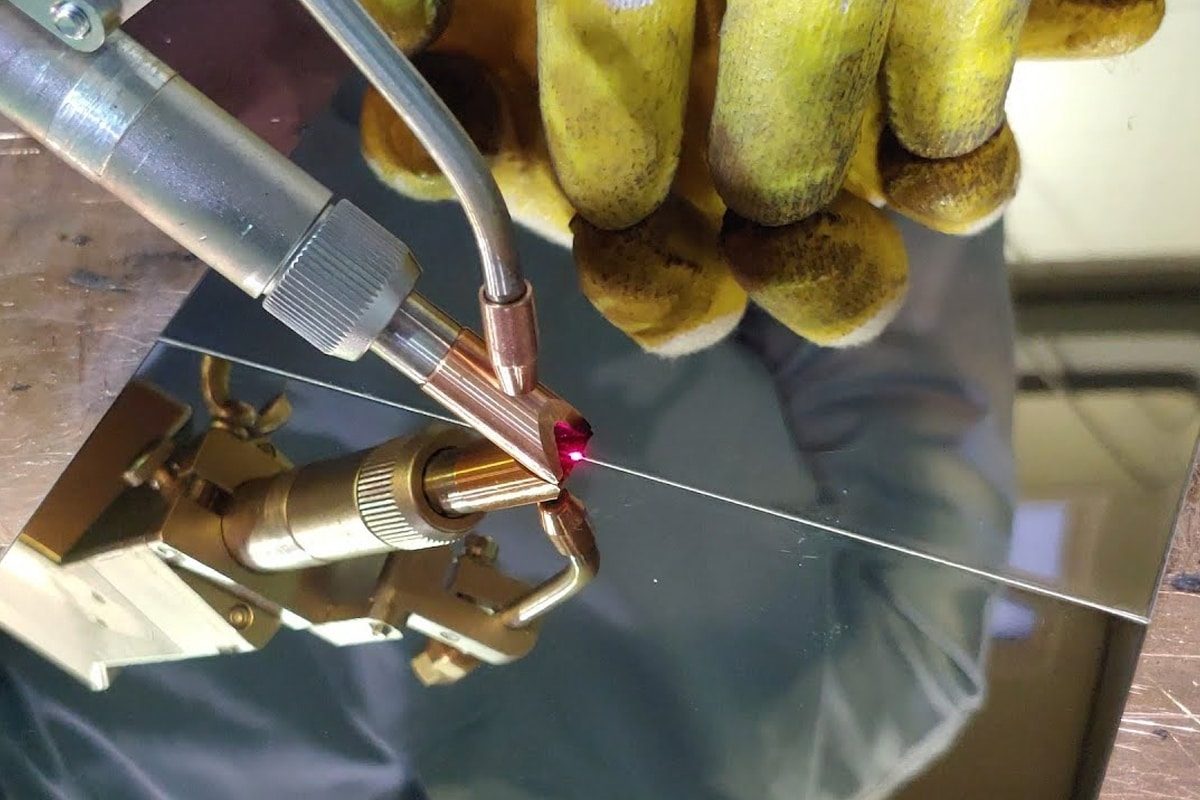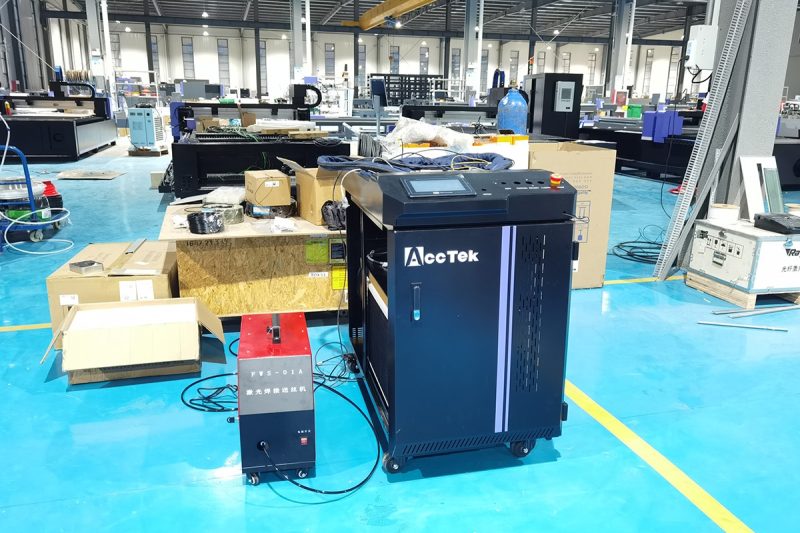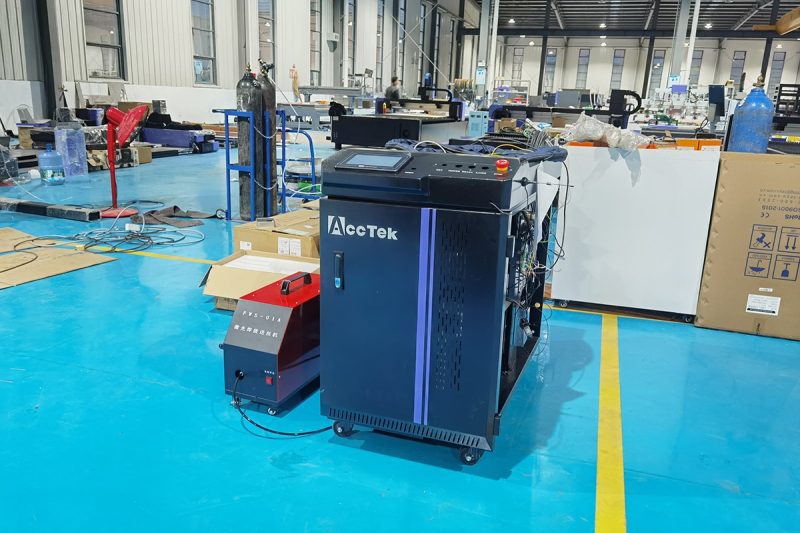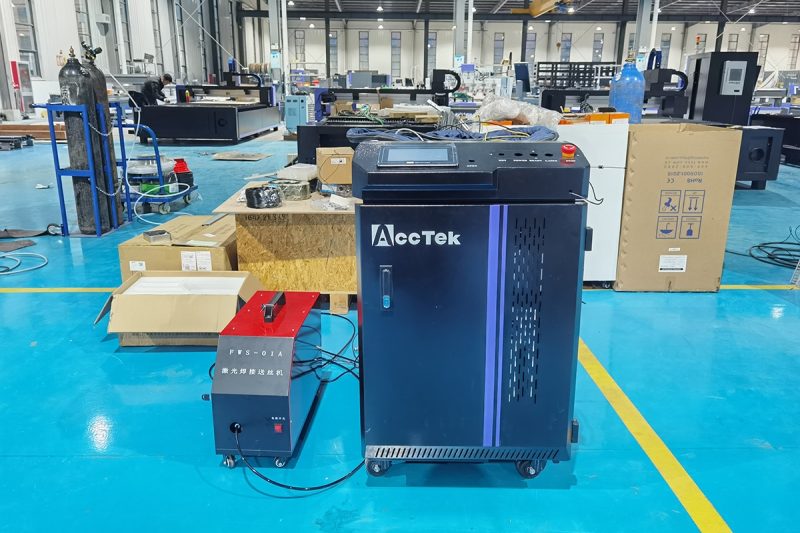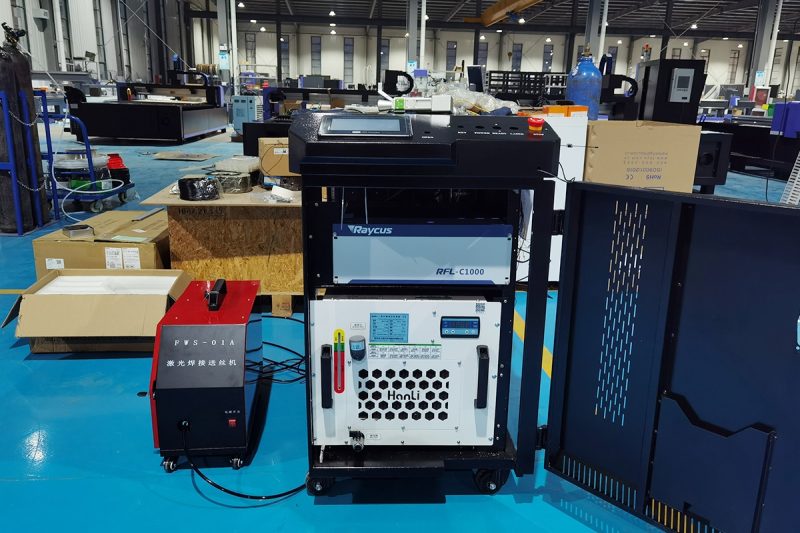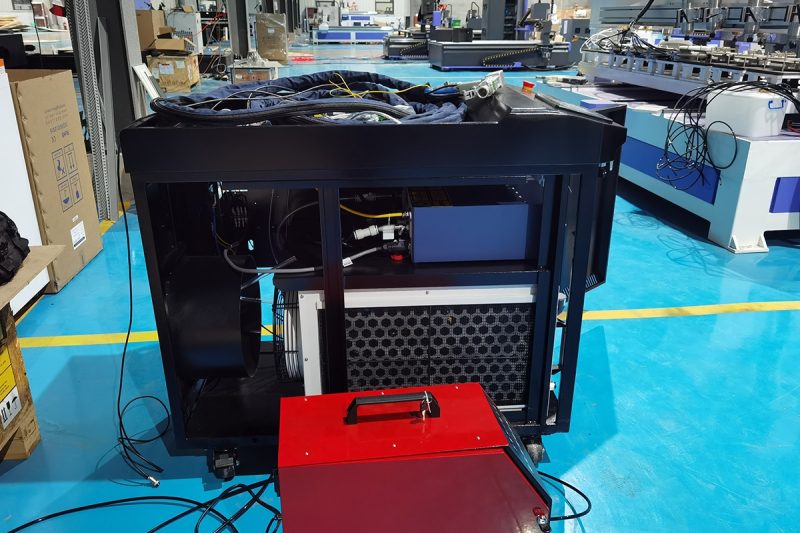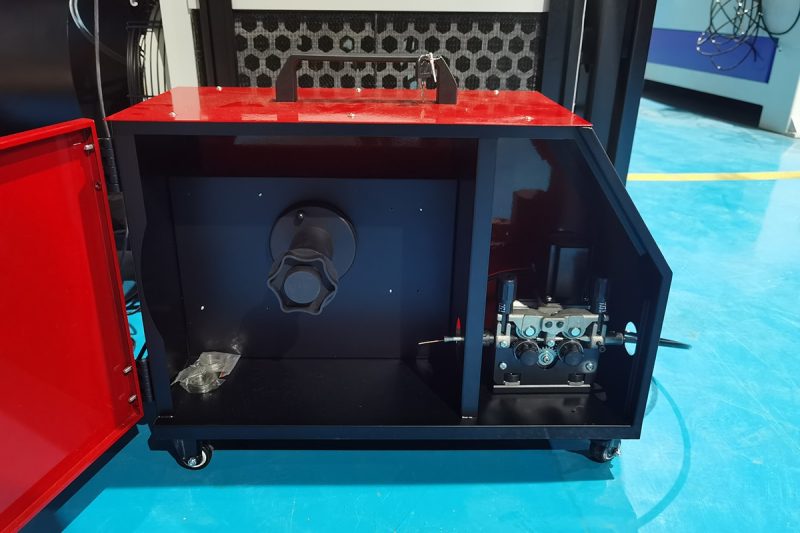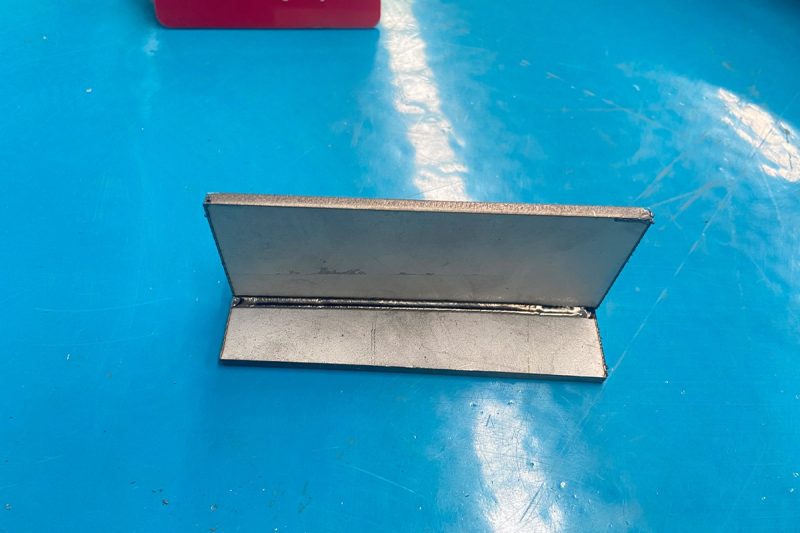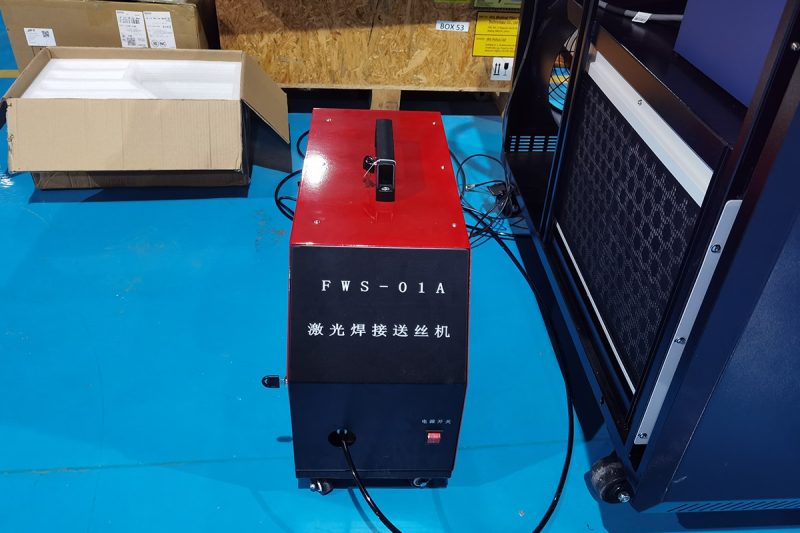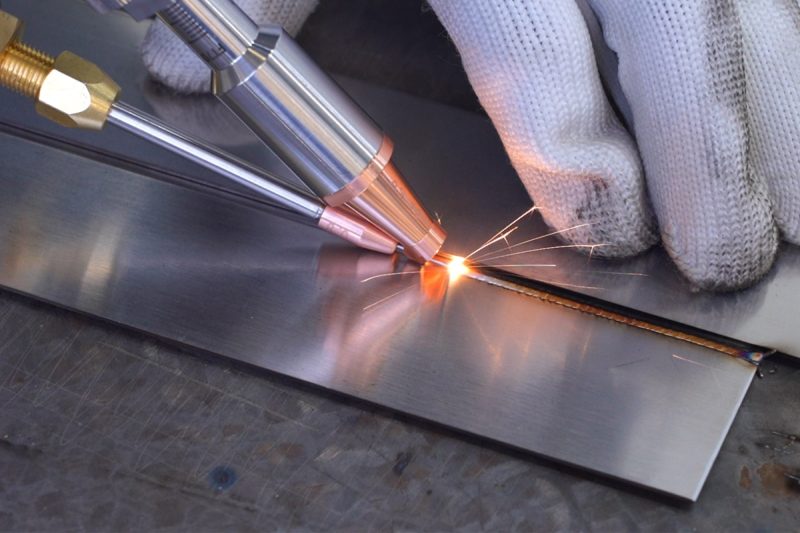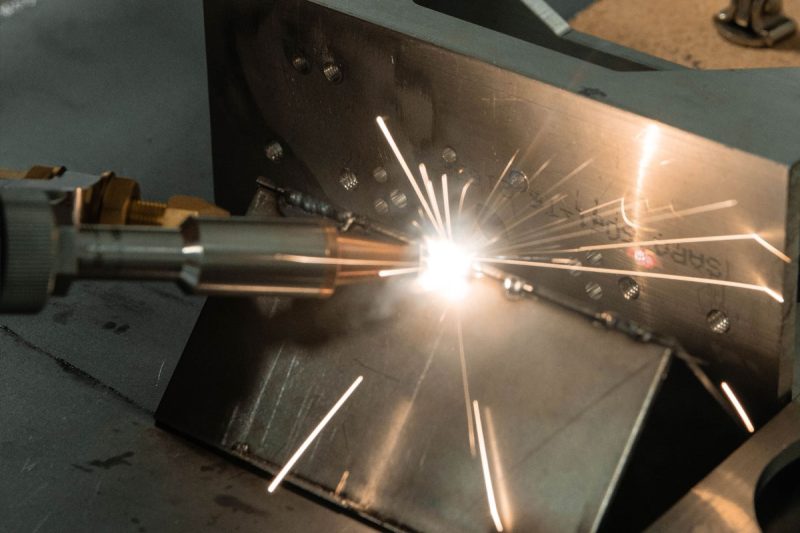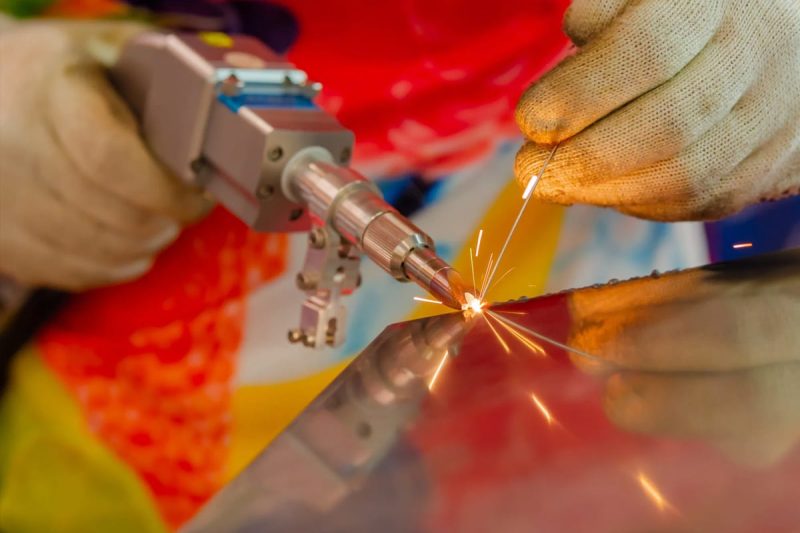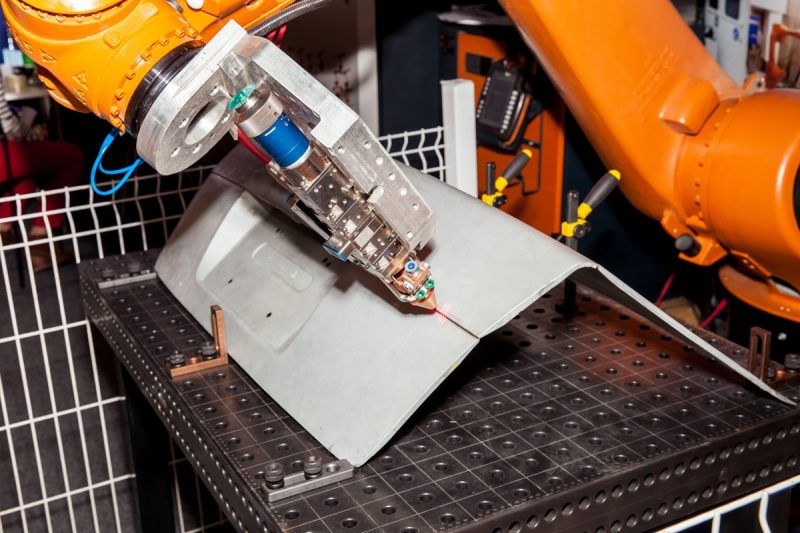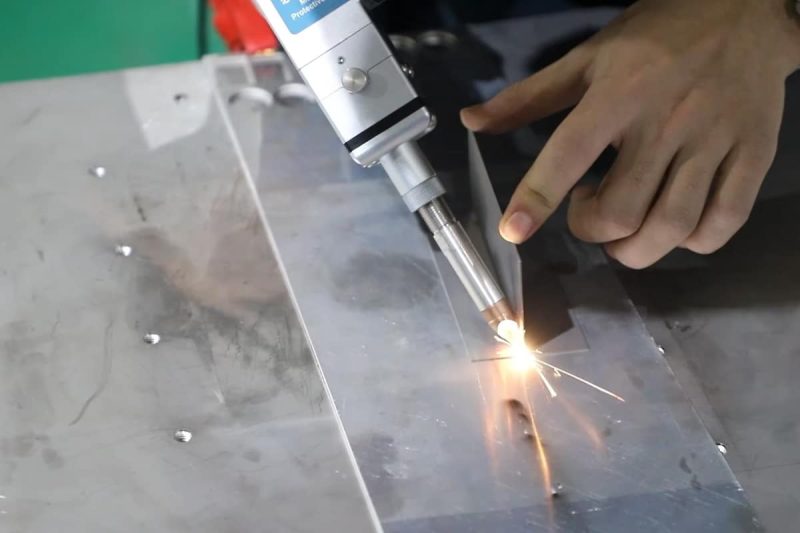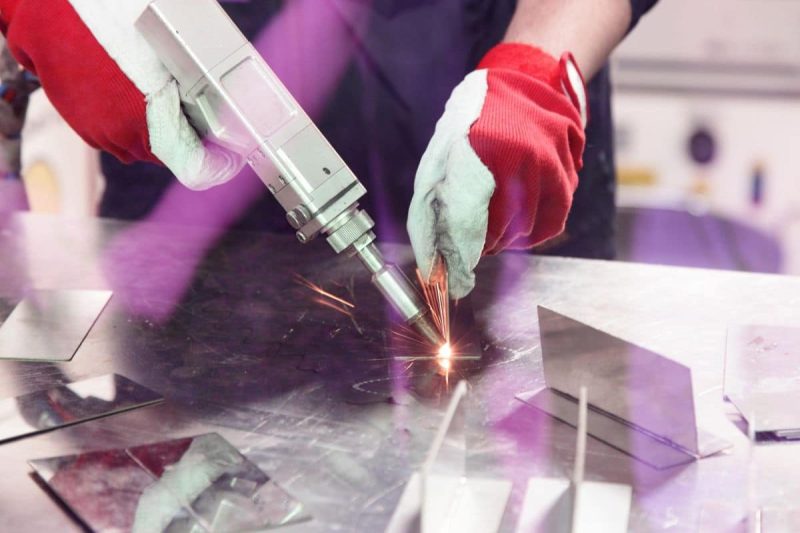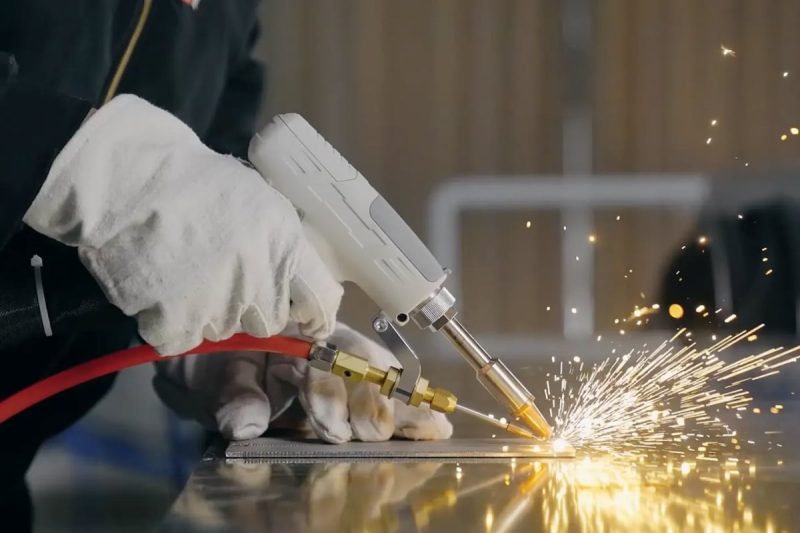Laser welding is a precise process that involves the focused application of a laser beam to join materials through heat. The fundamentals of laser welding revolve around four key stages: laser beam emission, absorption of energy, melting, and solidification. Each step plays a crucial role in ensuring the success of the weld and achieving the desired strength and quality.
The process begins with the emission of a highly concentrated laser beam from a laser source. The laser beam is a stream of light particles (photons) that are tightly focused into a small area, generating an immense amount of energy. This beam can be directed to specific points on the materials to be welded with great precision, allowing for controlled heat input and minimal impact on surrounding areas. The type of laser used—whether fiber or CO2—depends on the material and the desired outcome.
Once the laser beam strikes the surface of the material, the energy from the light is absorbed by the metal or thermoplastic. This absorption of energy causes the material’s temperature to rise rapidly. The efficiency of energy absorption varies based on the material type and the wavelength of the laser. Metals like stainless steel, aluminum, and titanium absorb laser energy effectively, making them ideal candidates for laser welding. Proper control of this stage can avoid overheating or underheating of the material.
As the material absorbs the laser energy, it begins to melt at the precise point where the beam is focused. The melting creates a pool of molten material, known as the weld pool, which forms the basis of the weld. The depth and width of this weld pool are controlled by adjusting the laser’s power, speed, and focus. This stage is critical for ensuring that the two materials being joined fully fuse, creating a strong and uniform weld. The localized nature of laser welding ensures that only the intended area is melted, minimizing distortion or damage to the surrounding material.
Once the laser moves away from the welded area, the molten material begins to cool and solidify. During solidification, the melted portions of the two materials fuse, forming a solid, durable bond. The cooling process must be controlled to prevent defects such as cracks or porosity in the weld. Rapid cooling, often aided by the environment or external cooling systems, helps maintain the integrity of the weld and ensures that the final joint is strong, clean, and free from defects.
These four stages—laser beam emission, energy absorption, melting, and solidification—form the core of the laser welding process. By controlling each stage with precision, laser welding can produce high-quality, reliable welds that are widely used across industries.
Laser welding is a highly precise process that uses a concentrated beam of light to join materials. Depending on the material type, thickness, and desired depth of weld penetration, laser welding operates in different modes: Conduction Mode, Transition Keyhole Mode, and Penetration (Keyhole) Mode. Each mode serves specific applications and offers distinct advantages.
In conduction mode, the laser heats the material’s surface without penetrating deeply. The laser energy is absorbed by the surface layer, causing localized melting. The heat spreads primarily through thermal conduction into the material. Conduction mode is typically used for thin materials or when precise control of heat input is required. It produces shallow welds with a smooth appearance, making it ideal for aesthetic or delicate applications where surface finish is important and deep penetration is not necessary. Conduction mode welding usually operates at lower power settings.
Transition keyhole mode occurs as the welding process shifts between conduction mode and full keyhole penetration mode. In this intermediate stage, the laser’s power is sufficient to create a small depression or keyhole in the material, but it does not yet fully penetrate the material as in the keyhole mode. This mode often occurs when welding medium-thickness materials or when gradually increasing laser power during the welding process. Transition keyhole mode provides more penetration than conduction mode while still maintaining a relatively smooth surface finish.
Penetration mode, often referred to as keyhole mode, is used for deep welding of thick materials. In this mode, the laser beam generates enough heat to vaporize the material at the focal point, creating a cavity or “keyhole.” This keyhole is surrounded by molten material, and as the laser moves, the molten metal solidifies behind it, forming a deep weld. Keyhole mode allows for full penetration of thick materials and is commonly used in heavy-duty applications like automotive, aerospace, and shipbuilding industries where strong, deep welds are required. This mode operates at high laser power levels and is highly efficient for joining thick metals.
Each of these modes provides different levels of penetration and surface finish, making laser welding versatile for a wide range of applications. The selection of the mode depends on factors such as material thickness, the type of material, and the desired strength and appearance of the weld.
Laser welding offers a range of benefits that make it an ideal choice for various industries, particularly those that require precision, speed, and minimal impact on the materials being welded. The following advantages highlight why laser welding is a preferred method in many manufacturing processes:
One of the greatest advantages of laser welding is its precision. The highly focused laser beam allows for exact control over the welding process, enabling the creation of fine, detailed welds with high accuracy. This level of control is especially useful for applications in industries like electronics, medical devices, and aerospace, where precision is paramount. The ability to direct the laser beam with such precision means less material wastage and a reduced need for post-weld processing.
Unlike traditional welding methods, laser welding produces minimal heat-affected zones (HAZ). The concentrated nature of the laser beam allows for the welding process to occur with very localized heating, meaning the surrounding material remains largely unaffected. This reduces the risk of thermal distortion and material degradation, ensuring the structural integrity of the weld and the material. This is particularly important for thin or heat-sensitive materials, which could warp or be damaged by excessive heat in conventional welding processes.
Laser welding is known for its speed and efficiency. The process can be completed much faster than traditional welding methods, which is ideal for high-volume production environments like automotive or industrial manufacturing. The rapid welding speed not only increases productivity but also reduces downtime, making it a cost-effective solution. In automated systems, laser welding can operate continuously, further boosting production throughput.
Laser welding is a non-contact process, meaning the laser beam does not physically touch the materials being welded. This reduces wear and tear on equipment and eliminates the risk of contamination from welding electrodes or filler materials. The non-contact nature of the process is particularly beneficial when working with delicate or small components, where physical contact could cause damage or misalignment. Additionally, this allows laser welding to be used in environments where access to the welding area is restricted or in applications that require a clean, sterile environment.
Laser welding is incredibly versatile and capable of joining a wide range of materials, including metals such as aluminum, stainless steel, titanium, and even thermoplastics. It can be used for both thick and thin materials, as well as for complex geometries that are difficult to weld using traditional methods. This versatility makes laser welding suitable for a broad spectrum of industries, including aerospace, automotive, electronics, and medical devices. Whether for micro-welding in electronics or deep welds in heavy machinery, laser welding provides a flexible solution for various applications.
These advantages demonstrate why laser welding is becoming an increasingly popular choice for modern manufacturing. Its combination of precision, speed, minimal heat impact, and versatility make it an efficient and effective welding solution for a wide range of industrial applications.
While laser welding offers many advantages, it is not without its challenges and limitations. These factors can influence the choice of welding method for specific applications. Understanding these limitations can help determine whether laser welding is appropriate for a given manufacturing process.
One of the main barriers to adopting laser welding technology is the high initial investment required. Laser welding systems are typically more expensive than traditional welding methods. The cost of the laser source, precision optics, cooling systems, and automated controls adds up, making the upfront cost significant. For businesses, this can be a challenge, especially for smaller companies or those with lower production volumes. However, over time, the high efficiency, reduced material wastage, and lower maintenance costs can help offset the initial expense, making it a more economical solution in the long run.
Laser welding is highly effective for many materials, particularly metals like stainless steel, aluminum, and titanium. However, it may face limitations with certain materials that do not absorb laser energy efficiently. For example, some reflective metals, such as copper and brass, can reflect a significant amount of the laser’s energy, making it harder to achieve a consistent weld. Additionally, plastics and composites may require special lasers or settings to ensure proper fusion, which can complicate the welding process for materials outside the typical metal range.
The precision of laser welding can be both an advantage and a limitation. For the process to work effectively, the materials being welded must be precisely aligned. Even slight misalignments can lead to incomplete or weak welds, affecting the overall quality of the joint. This level of precision requires strict control over the workpiece positioning and the welding equipment. In automated systems, precision alignment can be achieved more easily, but in manual or semi-automated setups, achieving and maintaining this alignment can be more challenging.
Laser welding is highly efficient for thin to medium-thickness materials. However, when it comes to welding very thick materials, laser welding may be limited in its ability to achieve full penetration in a single pass. While penetration mode can create deep welds, it often requires multiple passes or hybrid welding techniques when dealing with thicker materials, which can add complexity and reduce the speed advantages. For applications that require deep, thick welds in one go, other welding techniques, such as arc welding, might be more suitable.
By acknowledging these challenges and limitations, manufacturers can better assess the suitability of laser welding for their specific needs. Despite these limitations, laser welding continues to offer exceptional benefits for many industrial applications, especially in environments where precision and efficiency are prioritized.
Laser welding involves several key components working together to ensure precision, efficiency, and safety. Each part of the system plays a crucial role in delivering optimal performance. Below is an overview of the essential components that make up a laser welding system:
The laser source is the core of any laser welding system. It generates the concentrated beam of light that is used to weld materials. The most commonly used types of lasers in welding include fiber lasers and CO2 lasers. Fiber lasers are particularly popular due to their high energy efficiency, excellent beam quality, and suitability for a wide range of metals. The power of the laser source can be adjusted depending on the material thickness and the desired depth of penetration. The choice of the laser source affects the precision, speed, and quality of the weld.
Optics are responsible for directing and focusing the laser beam onto the material being welded. The system uses lenses and mirrors to accurately focus the beam, ensuring that the energy is concentrated on a specific point. The quality and configuration of the optics directly impact the precision and control of the welding process. Advanced optical systems allow for adjustable focus points, enabling manufacturers to fine-tune the laser for different materials and welding conditions. In some systems, optics also include beam delivery mechanisms, such as fiber optics, that guide the laser beam to the workpiece.
The motion system controls the movement of the laser head or the workpiece during the welding process. It ensures that the laser beam is directed along the correct path, following the joint that needs to be welded. In automated systems, the motion system may involve robotic arms or CNC-controlled positioning systems that provide precise movement across multiple axes. The accuracy of the motion system is critical for maintaining consistency in weld quality, especially in complex or high-volume applications. High-end motion systems also allow for intricate weld patterns and the ability to handle large or awkwardly shaped workpieces.
The control system serves as the brain of the laser welding machine, managing various parameters such as laser power, beam focus, welding speed, and movement of the laser or workpiece. Modern laser welding systems are often equipped with advanced control software that allows operators to program specific welding patterns, adjust settings in real-time, and monitor the welding process for quality assurance. The control system may also include feedback loops that adjust parameters based on material conditions or other variables, ensuring consistent weld quality across different applications.
Laser welding generates a significant amount of heat, especially when working with high-powered lasers. To prevent overheating and ensure stable performance, a cooling system is used to dissipate excess heat from both the laser source and the optics. Cooling systems can be air-cooled or water-cooled, depending on the system’s requirements. For high-power industrial laser welding machines, water-cooled systems are often preferred due to their higher efficiency in maintaining optimal operating temperatures. Proper cooling not only enhances the lifespan of the equipment but also prevents thermal distortions in the welding process.
Safety is a top priority in laser welding, as the high-intensity laser beam can cause serious injury to operators if not properly controlled. Laser welding machines are equipped with various safety systems to protect operators and ensure a safe working environment. Common safety features include protective enclosures around the welding area, interlock systems that prevent the laser from firing if the enclosure is open, and emergency stop buttons. Additionally, laser-specific protective eyewear is required to shield operators’ eyes from harmful laser radiation. Ventilation systems can help remove harmful fumes or particulates created during the welding process.
Each of these components plays an integral role in ensuring the efficiency, precision, and safety of laser welding operations. When combined, they create a powerful system capable of producing high-quality welds in a variety of industrial applications. AccTek Laser’s advanced welding machines integrate all these components seamlessly, providing reliable and efficient solutions for modern manufacturing needs.
The use of gas in laser welding plays a crucial role in improving weld quality, protecting the welding area, and enhancing the overall process. Gases are often introduced during the welding process to shield the molten material from atmospheric contamination, stabilize the laser beam, and improve penetration and surface finish. Different types of gases are used depending on the material being welded and the desired weld characteristics. Below are the primary functions and common types of gases used in laser welding:
The choice of gas in laser welding is a critical factor that affects the overall performance and outcome of the welding process. By selecting the correct gas and optimizing its flow, manufacturers can achieve better weld quality, increased efficiency, and fewer defects.
Laser welding is widely used to join a variety of metals with precision and efficiency. The process is ideal for many metals, but each type of material reacts differently to laser energy, requiring specific settings and considerations to achieve optimal results. Below are some of the most common metals used in laser welding and their characteristics:
Stainless steel is one of the most frequently welded metals using laser technology. It has excellent weldability due to its relatively low thermal conductivity and good absorption of laser energy. Stainless steel is widely used in industries such as automotive, medical devices, and food processing because of its corrosion resistance and strength. Laser welding of stainless steel provides clean, precise welds with minimal distortion, making it ideal for applications where appearance and durability are critical.
Aluminum is more challenging to weld using laser technology due to its high reflectivity and thermal conductivity. These properties can lead to difficulties in energy absorption and heat management during the welding process. However, with appropriate laser settings, such as higher power levels and the use of specialized wavelengths or techniques like pulsed laser welding, aluminum can be successfully welded. Laser welding is commonly used for aluminum in the aerospace and automotive industries, where lightweight materials are essential for improving fuel efficiency.
Titanium is another metal that is well-suited for laser welding. Known for its high strength, corrosion resistance, and lightweight properties, titanium is used in aerospace, medical devices, and chemical processing industries. Laser welding offers excellent control over the heat input when working with titanium, which helps prevent contamination and oxidation. Additionally, the precision of laser welding ensures that titanium welds are strong and defect-free, making it a preferred method for high-stress applications.
Carbon steel is commonly welded with lasers, especially in the automotive and construction industries. It has good absorption properties and responds well to laser welding, especially when working with thin sheets. Carbon steel’s relatively low thermal conductivity means that heat is more concentrated at the weld joint, allowing for deep penetration with minimal distortion. Laser welding also reduces the risk of defects such as cracking, making it ideal for high-volume production environments.
Copper is a challenging metal for laser welding due to its high reflectivity and thermal conductivity, which make it difficult to achieve sufficient energy absorption. However, recent advancements in laser technology, such as the use of green or blue lasers, have improved the ability to weld copper effectively. Laser welding is used for copper in industries such as electronics and electrical engineering, where components like connectors and wiring require precise and clean welds.
Nickel alloys are widely used in high-performance applications, including aerospace, chemical processing, and power generation. These metals exhibit excellent heat and corrosion resistance, making them ideal for extreme environments. Laser welding is well-suited for joining nickel alloys, as it provides high precision, minimal heat-affected zones, and strong welds. The process ensures that the mechanical properties of the nickel alloy are maintained, which is critical for applications requiring long-term durability.
Brass, an alloy of copper and zinc, is another material that can be laser welded, though it poses similar challenges to copper due to its reflectivity. Brass is often used in the manufacturing of decorative objects, musical instruments, and components for the plumbing industry. Laser welding is advantageous for brass because it allows for intricate welds and provides a clean finish. However, careful control of the laser settings is necessary to prevent porosity or defects during welding.
In specialized industries such as aerospace, defense, and medical, exotic metals and alloys like Inconel, Hastelloy, and cobalt-chromium alloys are often used due to their unique properties. Laser welding is ideal for these materials because it offers precise control over the heat input, reducing the risk of thermal damage or distortion. Laser welding ensures strong, defect-free joints, which is crucial for the demanding applications where these exotic metals are used.
Laser welding is versatile and can be applied to a wide range of metals, from common industrial materials like stainless steel and aluminum to more specialized metals like titanium and nickel alloys. By carefully selecting the appropriate laser settings and techniques for each type of metal, manufacturers can achieve high-quality welds that meet the stringent demands of various industries.
Laser welding can be performed with or without welding wire, depending on the specific application and the requirements of the joint being welded. The choice to use welding wire depends on factors such as the type of material, joint design, and the desired weld strength.
In many laser welding applications, especially when welding thin materials or components with a close fit, filler wire is not necessary. This is known as autogenous welding, where the laser melts the two surfaces of the material, allowing them to fuse without the need for additional material. Autogenous laser welding is highly precise and is often used in industries such as electronics, aerospace, and automotive manufacturing, where tight tolerances and minimal distortion are critical. This method is also faster and more cost-effective, as it eliminates the need for filler material.
In some cases, especially when welding thicker materials or when the joint has a gap, the use of filler wire is required. Filler wire is added to the weld pool during the laser welding process to fill gaps, increase the strength of the weld, or compensate for material loss. It is also used when joining dissimilar materials or when additional reinforcement is needed for the weld joint. The use of welding wire can enhance the quality of the weld, ensuring a stronger bond and reducing the risk of defects.
Laser welding does not always require welding wire, but it can be used when necessary to improve weld quality, fill gaps, or provide additional strength. The decision to use filler wire depends on the specific requirements of the welding project.
Laser welding has become an essential process across various industries due to its precision, speed, and ability to produce strong, clean welds. Its versatility allows it to be applied to a wide range of materials and components, making it invaluable in sectors where accuracy and efficiency are paramount. Below are some of the key industries where laser welding plays a crucial role.
The automotive industry has been one of the largest adopters of laser welding technology. Laser welding is used extensively in the assembly of vehicle bodies, frames, and components due to its ability to create high-strength welds with minimal distortion. The precision and speed of laser welding are particularly beneficial in producing lightweight structures, which are essential for improving fuel efficiency in modern vehicles. Laser welding is also widely used in the manufacturing of components such as gearboxes, exhaust systems, and fuel injectors, ensuring reliable performance and longevity.
In the aerospace industry, precision and safety are critical, making laser welding an ideal solution for manufacturing complex components. Laser welding is used to join materials like titanium, aluminum, and high-strength alloys, which are commonly used in aircraft construction. The ability to create clean, high-quality welds without causing material distortion is especially important in the production of fuselage components, engine parts, and turbine blades. Laser welding has a minimal heat-affected zone, ensuring the structural integrity of the material is retained, which is critical in helping to maintain safety standards for aerospace applications.
The electronics industry relies on laser welding for the assembly of small, delicate components that require high precision. Laser micro-welding is used to join tiny parts such as connectors, sensors, and circuit boards. The non-contact nature of laser welding is particularly beneficial in electronics manufacturing, as it prevents damage to sensitive components that could occur with traditional welding methods. Additionally, laser welding enables manufacturers to work with very thin materials, such as the metal casings in smartphones, laptops, and other consumer electronics, without compromising the product’s design or functionality.
Laser welding is also widely used in the medical device industry, where the need for clean, sterile, and precise welding processes is paramount. Medical devices such as pacemakers, surgical instruments, and implants require high-quality welds to ensure their reliability and safety. The non-invasive and precise nature of laser welding allows for the joining of small, intricate parts without introducing contaminants or compromising the integrity of the material. Additionally, laser welding is often used for medical-grade materials like stainless steel and titanium, ensuring that the devices meet strict hygiene and performance standards.
In the energy sector, laser welding is employed in the manufacturing of components for power generation, oil and gas extraction, and renewable energy technologies. High-precision welding is essential for creating strong, durable welds in equipment such as turbines, pipelines, and heat exchangers, where performance and longevity are critical. In the renewable energy sector, laser welding is used in the assembly of solar panels and wind turbines, where lightweight, corrosion-resistant materials must be joined efficiently. Laser welding’s ability to work with high-strength materials ensures that these energy systems can withstand harsh environmental conditions while maintaining performance.
The versatility and precision of laser welding make it an indispensable tool across these industries. As technology continues to advance, laser welding will remain a key solution for manufacturers seeking to enhance the quality, efficiency, and reliability of their products. AccTek Laser’s advanced laser welding systems are designed to meet the diverse needs of these industries, ensuring top-quality results and performance across a wide range of applications.
Laser welding is a highly efficient process, but several key factors determine its overall performance and effectiveness. Optimizing these factors is crucial to achieving high-quality welds and maximizing production efficiency. Below are the primary factors that influence the efficiency of laser welding:
Laser power is one of the most critical factors influencing the efficiency of the welding process. Higher laser power enables deeper penetration and faster welding speeds, making it suitable for thicker materials and high-strength welds. However, excessive power can lead to overheating, causing defects such as spatter or excessive melting. For optimal efficiency, the laser power must be carefully matched to the material type, thickness, and desired weld depth. Balancing power levels ensures strong welds without compromising material integrity or causing unnecessary energy consumption.
The speed at which the laser moves across the material significantly impacts welding efficiency. Faster welding speeds reduce heat input, which helps minimize distortion and thermal damage, particularly in heat-sensitive materials. However, if the welding speed is too high, the material may not have enough time to absorb sufficient energy, leading to incomplete or weak welds. On the other hand, slower speeds can lead to excessive heat buildup and material deformation. Finding the right balance between speed and power is crucial for achieving a high-quality weld while maintaining efficiency.
The focal spot size refers to the diameter of the laser beam as it contacts the material. A smaller focal spot concentrates more energy on a specific area, resulting in deeper penetration and more precise welding. However, a larger focal spot distributes the energy over a wider area, reducing penetration but allowing for smoother surface finishes in some cases. Adjusting the focal spot size based on the material and application can improve the welding process’s accuracy and efficiency. Fine-tuning the spot size is particularly important for micro-welding applications, where precision is key.
Different materials respond to laser welding in unique ways. Metals like stainless steel, titanium, and aluminum are commonly welded using lasers, but each material requires specific adjustments in terms of power, speed, and focal spot size to achieve optimal results. Additionally, the thickness of the material plays a significant role in determining welding efficiency. Thicker materials require more power and slower welding speeds for full penetration, while thinner materials benefit from lower power settings and faster speeds to avoid burn-through or distortion. Understanding the material’s properties ensures efficient and high-quality welding.
Beam quality refers to how well-focused and coherent the laser beam is, and it has a direct impact on the efficiency of the welding process. A high-quality beam produces a more concentrated energy output, resulting in deeper penetration and higher precision. Poor beam quality, on the other hand, can lead to inconsistent welds, lower energy transfer efficiency, and reduced weld quality. Ensuring that your laser system maintains optimal beam quality can help achieve consistent welds, especially in high-precision applications.
By carefully controlling these factors, manufacturers can significantly improve the efficiency of their laser welding processes. Achieving the right balance between laser power, welding speed, focal spot size, material properties, and beam quality leads to strong, reliable welds with minimal defects. AccTek Laser’s advanced welding systems are designed to provide the flexibility and precision needed to optimize these factors, ensuring high-performance results in a wide range of industrial applications.
When implementing laser welding technology, it is essential to account for several factors to ensure optimal performance and high-quality results. Each consideration affects the efficiency, cost, and overall success of the welding process. Below are the key factors to evaluate:
The type of material being welded plays a crucial role in determining the parameters of the laser welding process. Metals such as stainless steel, aluminum, titanium, and nickel alloys are commonly welded using lasers, but each material requires specific adjustments. For example, reflective metals like copper and aluminum may require higher laser power or specialized lasers to achieve proper energy absorption. Additionally, certain materials may demand specific laser wavelengths to ensure consistent welds. Understanding the material properties, including its reflectivity, thermal conductivity, and melting point, can help choose the correct laser settings.
The design of the joint to be welded significantly impacts the laser welding process. Proper alignment and preparation of the joint ensure effective energy absorption and strong welds. Laser welding is most efficient when used on joints with a minimal gap between the parts, as it is a non-contact process that requires precise focus. Common joint designs for laser welding include butt joints, lap joints, and fillet joints. Careful consideration of the joint configuration ensures optimal energy transfer and minimizes the risk of defects such as porosity or incomplete fusion. Joint design should also account for accessibility, ensuring that the laser beam can reach all areas of the joint.
The power of the laser is a critical factor in determining the depth and strength of the weld. Higher-power lasers provide deeper penetration and are suitable for welding thicker materials, while lower-power settings work best for thinner or more delicate materials. It is important to select the appropriate power level based on the material thickness and the type of weld required. Insufficient power can result in weak or incomplete welds, while excessive power can cause material deformation or damage. Finding the right balance ensures consistent results and maximizes the efficiency of the welding process.
While laser welding offers numerous benefits in terms of precision and speed, it often involves a higher initial investment compared to traditional welding methods. The cost of a laser welding system depends on factors such as laser type, power output, and the need for additional features like automation or specialized optics. However, the long-term benefits—such as increased production speed, reduced material waste, and lower labor costs—often offset the higher upfront expenses. Additionally, the reduced need for post-weld processing and the ability to automate the process make laser welding a cost-effective solution for high-volume production.
By carefully considering material type, joint design, power requirements, and cost, manufacturers can optimize their laser welding process to achieve high-quality results efficiently. AccTek Laser’s advanced systems are designed to provide flexibility and precision, allowing users to tailor their welding operations to meet the specific needs of their projects while keeping costs manageable.
While laser welding is known for its precision and high-quality results, like any welding process, it is not immune to potential defects. These defects can arise due to improper parameters, unsuitable materials, or environmental factors. Understanding common defects helps manufacturers optimize their processes and avoid quality issues. Here are some of the most common defects associated with laser welding:
Porosity occurs when gas bubbles become trapped within the weld as it solidifies. This defect weakens the weld joint and can lead to failure under stress. In laser welding, porosity often arises from contamination on the material surface, improper shielding gas flow, or excessive heat input. To prevent porosity, it is important to ensure that the material is clean, proper shielding gases are used, and the laser settings are optimized.
Cracks can develop in the weld during or after the laser welding process, particularly in high-stress applications. Cracking is typically caused by rapid cooling, high internal stresses, or incompatibility between the materials being welded. In some cases, materials that are prone to hardening or brittleness, such as certain aluminum or steel alloys, are more susceptible to cracking. Preheating the materials, using proper joint design, and adjusting laser parameters can help mitigate this defect.
An undercut occurs when excessive material is melted away from the joint, resulting in a groove along the weld edge. This defect reduces the strength of the weld and can affect the overall structural integrity of the component. Undercutting is often caused by high laser power or improper weld speed. Controlling the power output and optimizing the welding speed can reduce the risk of undercutting.
Incomplete fusion happens when the laser fails to fully melt the materials at the joint, leading to a weak bond between the parts. This defect is commonly caused by insufficient laser power, improper alignment of the laser beam, or high welding speed. Incomplete fusion can be particularly problematic in applications requiring high-strength welds. To avoid this issue, it is important to carefully align the laser beam and ensure that adequate power and welding speed are applied.
Spatter refers to small droplets of molten material that are ejected from the weld pool during the welding process. This material can adhere to the surface of the workpiece, creating imperfections that may require post-weld cleaning or finishing. Spatter is typically caused by excessive heat input, high welding speed, or insufficient shielding gas. To minimize spatter, it is important to fine-tune the laser parameters and ensure proper gas flow.
In laser welding, keyhole instability can occur when the laser creates an unstable cavity in the molten material, causing fluctuations in the weld pool. This instability can lead to uneven welds, porosity, or other defects. Keyhole instability is often caused by high laser power or improper focus of the laser beam. Ensuring a stable keyhole requires optimizing the laser parameters, such as power, focus, and speed.
Burn-through occurs when the laser penetrates completely through the material, creating a hole or thinning the material beyond acceptable limits. This defect is usually the result of excessive laser power, slow welding speeds, or using a laser that is too intense for the thickness of the material. Reducing the power or increasing the welding speed can prevent burn-through, especially in thin materials.
By understanding and addressing these defects, manufacturers can fine-tune their laser welding processes to produce consistent, high-quality results. AccTek Laser’s advanced laser welding systems are designed with precision control features that help reduce the occurrence of these defects, ensuring strong, reliable welds across a range of materials and applications.
Safety is paramount when working with laser welding systems, as the high-energy laser beam can pose significant risks to operators if proper precautions are not taken. Several safety measures are integrated into laser welding environments to protect workers and maintain a safe workspace. Below are the key components that ensure safety during laser welding:
Laser enclosures are designed to contain the laser beam and prevent accidental exposure to operators or bystanders. These enclosures create a controlled environment around the welding area, ensuring that the laser beam remains within the designated workspace. The walls of the enclosure are typically made from materials that can absorb or reflect the laser energy, preventing it from escaping. Some systems also use automated doors or shutters that close when the laser is in operation, ensuring that the welding process remains completely contained. Enclosures are especially important for high-power laser welding systems, where even brief exposure to the laser beam can cause serious harm.
Despite the presence of enclosures, operators are often required to wear laser-specific protective eyewear. Laser welding emits powerful beams of light that can severely damage the eyes, even from indirect exposure. Protective eyewear is designed to block or filter out harmful wavelengths of light, depending on the type of laser being used. The eyewear is categorized by its optical density, which measures how effectively it blocks laser radiation. Wearing the correct protective eyewear is essential in preventing eye injuries, and it is a standard safety requirement in all laser welding operations.
Laser welding can produce fumes, smoke, and other airborne contaminants that may be hazardous to workers’ health. The process of welding metals can vaporize the material, releasing potentially harmful particles into the air. To mitigate these risks, proper ventilation systems must be in place to remove fumes and particulates from the work area. Some systems include built-in exhaust systems or fume extractors that capture and filter the air, ensuring a safe breathing environment for operators. Ensuring adequate ventilation not only protects workers but also prevents contamination of the workspace and sensitive equipment.
Laser welding systems are equipped with interlocks and emergency stop mechanisms to enhance safety. Interlocks are designed to automatically disable the laser if any safety feature is breached, such as if the enclosure is opened during operation. This prevents accidental exposure to the laser beam and ensures that the system remains safe in unexpected situations. Emergency stop buttons allow operators to quickly halt the laser welding process in case of an emergency. These stops are positioned within easy reach and immediately shut down the laser and any associated equipment, protecting operators from potential hazards.
These safety systems ensure that laser welding operations are conducted in a controlled and secure environment, reducing the risk of accidents or injuries.
Laser welding is a highly efficient and precise method for joining materials, particularly metals, by using a focused laser beam to create a strong, clean weld. It is widely used in industries such as automotive, aerospace, electronics, medical devices, and energy due to its speed, accuracy, and ability to produce minimal heat-affected zones. Laser welding offers numerous advantages, including superior control, reduced material distortion, and high welding speeds. However, it also comes with challenges such as high initial investment, material limitations, and the need for precise alignment. Depending on the application, laser welding can be performed with or without filler wire, and common gases are used to protect the weld area. Despite potential defects such as porosity and cracking, optimizing the welding parameters can mitigate these issues.
At AccTek Laser, we specialize in providing high-quality laser solutions for a variety of industries. Whether you require laser welding, cutting, cleaning, or marking, our advanced laser systems are designed to meet the needs of your business with precision and efficiency. Our laser welding machines offer excellent performance across a wide range of materials, from thin metals to thick industrial components. With customizable options, including automated systems and compatibility with various materials and gases, we ensure that your specific production requirements are met.
AccTek Laser is committed to delivering comprehensive support, from initial consultation to after-sales service. Our team of experts is ready to guide you through selecting the right laser welding system for your application, helping you maximize productivity and quality. Contact AccTek Laser today to learn more about how our laser solutions can enhance your manufacturing capabilities and drive your business forward.
